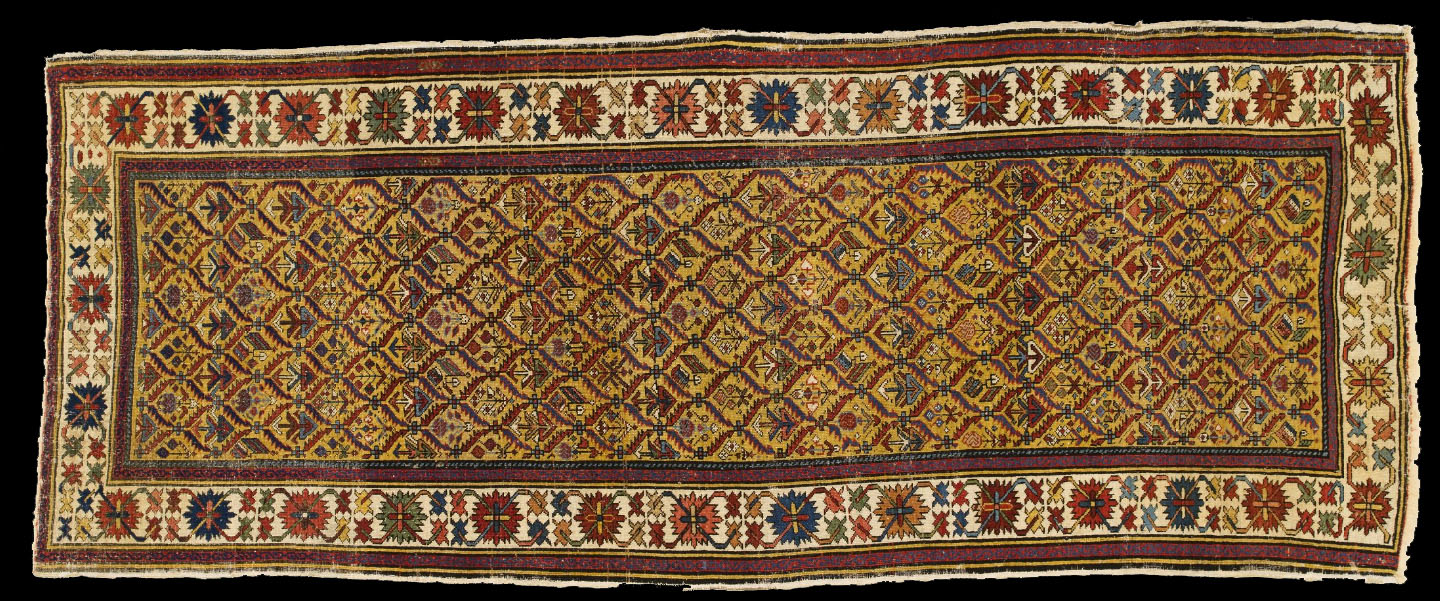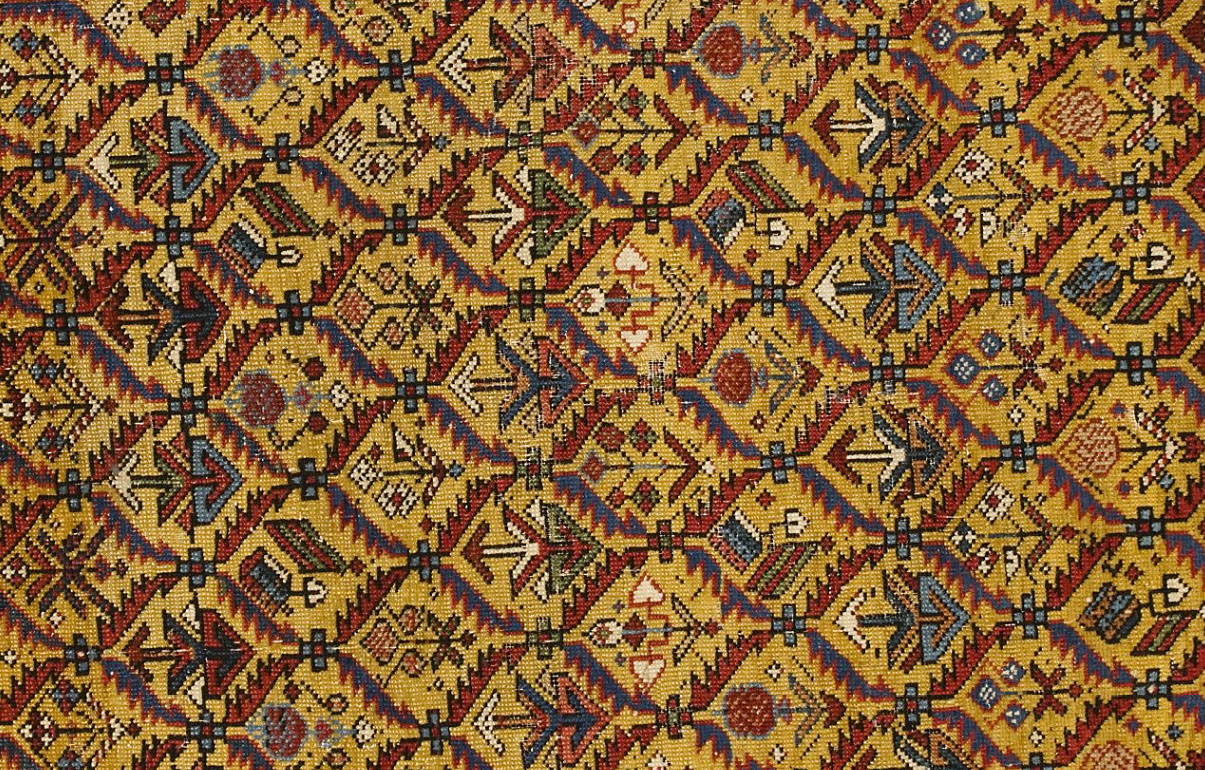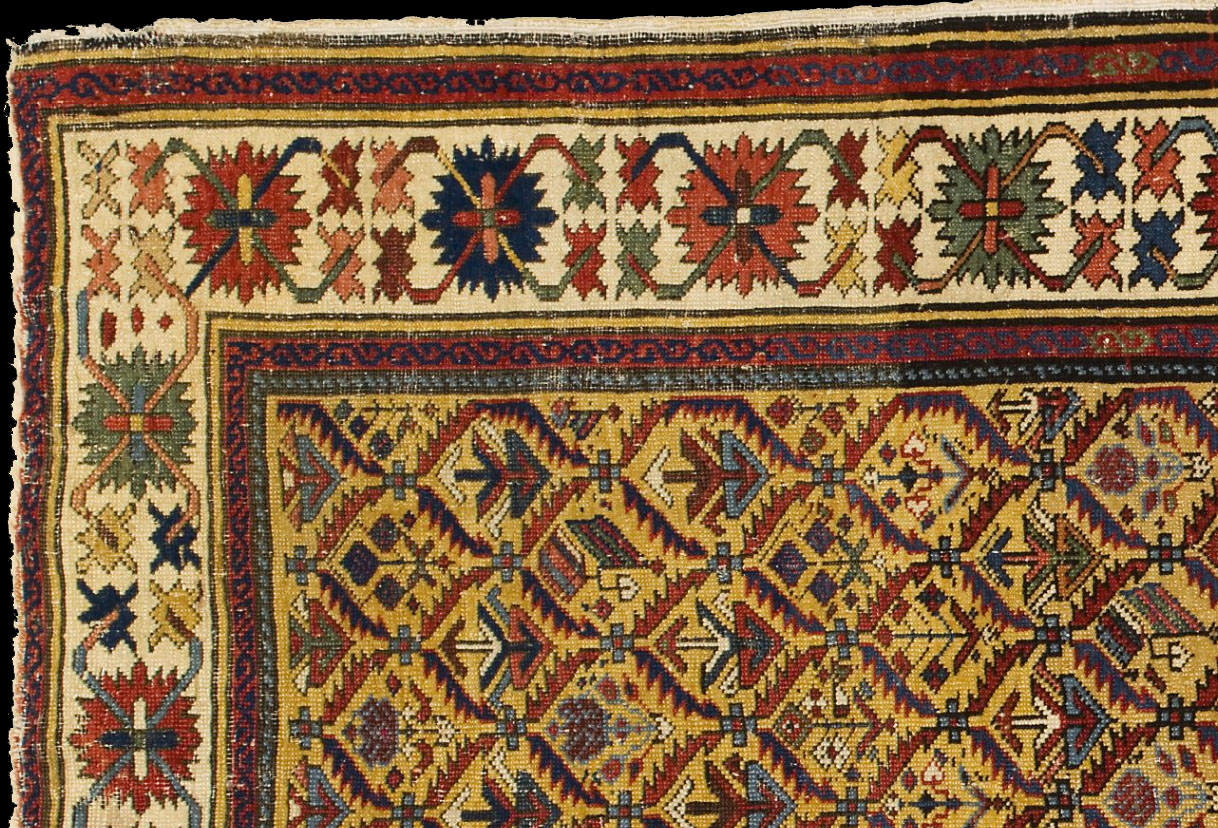|
Knotted pile runner
from Kuba region, Caucasus, 1850 - 1860
The botanical theme of this yellow-ground runner from Kuba is typical of
many rugs from the northern Caucasus, as is the border of sharp rosettes
with four leaves on either side. The abundant use of yellow in the field is
unusual and probably reflects the local availability of good fast yellow
dyes. With their high knot density, rugs from Kuba are considered by many to
be the finest of the Caucasian weaves. As is characteristic of rugs from
Kuba or the surrounding area, the warps and wefts are of wool, with cotton
side cords, and a symmetrically-knotted wool pile.
The term 'Kuba' refers to both the town and the surrounding district, both
of which have a long tradition of carpet weaving. The area includes numerous
small villages, many of which give their names to their rugs. The large
number of designs borrowed and adapted within the area has made the sourcing
of carpets to particular villages problematic. The design of this Kuba
runner, for example, strongly resembles that of some Shirvan prayer rugs
which were formerly ascribed to Daghestan.
The runner belongs to a collection of five rugs and three nomadic trappings
selected by the donor as representative of the main carpet making regions of
Asia, from Turkey in the west, across Iran (Persia) and into Central Asia.
The collection includes floor coverings and tent partitions, horse
decorations and saddle bags, thus documenting different types of rugs and
trappings as well as highlighting their varying functions.
Christina Sumner, Principal Curator Design & Society
April, 2010
Production notes
The botanical theme of the design is typical of many rugs from the northern
Caucasus, as is the border of sharp rosettes with four leaves on either
side. The abundant use of yellow in the field is unusual and probably
reflects the local availability of good fast yellow dyes.
Typically for a rug from the town of Kuba or surrounding area, the warps and
wefts of this example are of wool, with cotton side cords, and the pile is
symmetrically knotted. Rugs from Kuba, which have a high knot density, are
considered by many to be the finest of the Caucasian weaves. Kuba rugs are
easily identifiable by their rigid feel, due to the practice of
substantially depressing alternate warps. Because of the almost exclusive
use of wool, they are usually quite heavy.
History notes
This rug has been in the collection of the donor, Dr George Soutter, for
over 10 years and is part of a collection given to the Powerhouse Museum by
Dr Soutter to acknowledge the achievements of the Oriental Rug Society of
NSW (ORS), an affiliated society of the Museum, to emphasise the
significance of the Museum's rug collection and to encourage its growth.
The runner was exhibited in 'Flowers of the loom', an exhibition curated by
the Oriental Rug Society of NSW at the Royal Botanic Gardens, Sydney in
1990. The rug is published in the accompanying catalogue of the same name on
page 15. In March 2010, the runner was installed in a Level 1 Circulation
location alongside the recently purchased 2009/64/1, a Khamseh chicken rug,
sponsored by the ORS.
Description
Rug or runner, wool / cotton, symmetrical knots, Kuba region, northern
Caucasus, 1850-1860
A long rectangular, knotted pile runner with a mustard coloured central
field compartmentalised by a serrated leaf lattice containing a series of
stylised floral motifs. The main border features sharp rosettes and four
small leaves on a white ground and the guard stripes contain a series of
elongated S shapes. The palette is muted and includes shades of orange, blue
and red, plus black and natural white with the mustard field. The side cords
are cotton.
Maker: unknown; Kuba region, Caucasus; 1850 - 1860
Registration number: 2004/136/2
Production date: 1850 - 1860
Width: 1060 mm
Acquisition credit line: Gift of Dr George Soutter under the Australian
Government's Cultural Gifts Program, 2004


 |



